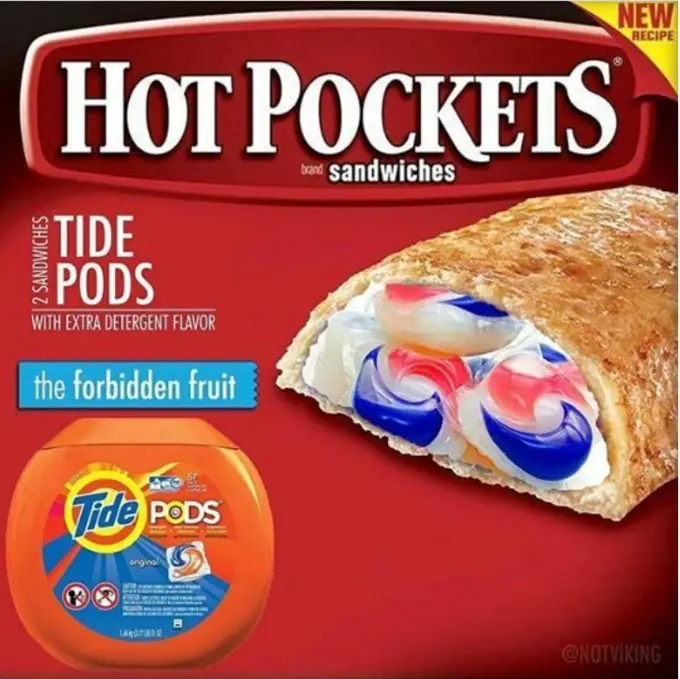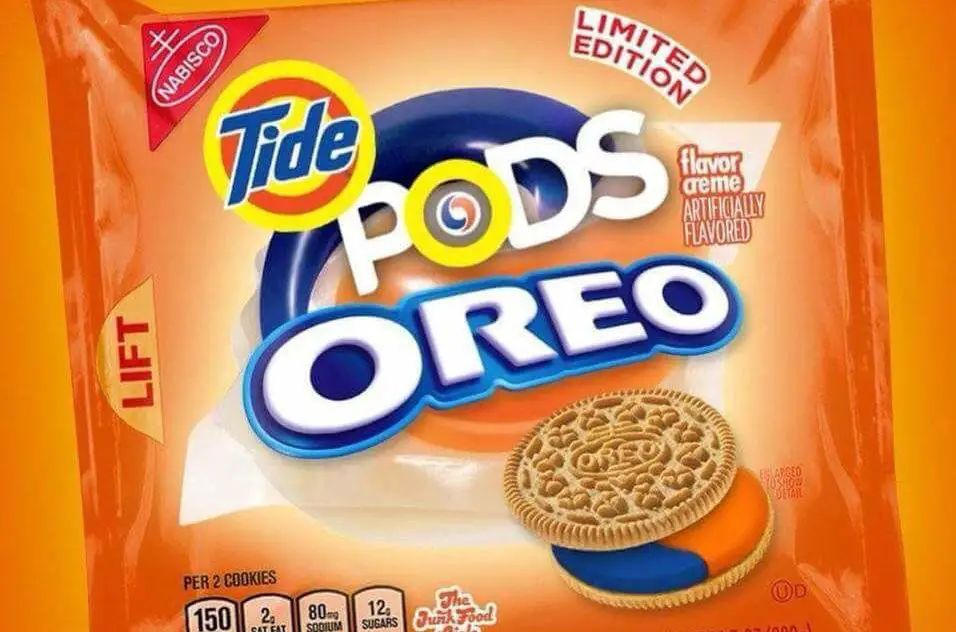The internet truly is a wonderful place. It allows you to connect with people from all over the world and gives you access to infinite amounts of information with the click of a button. It’s great for research, news, creative work and even just leisurely watching the same Vine compilation for the tenth time in a row. The internet is always adapting and changing to reach new highs and showcase the next big things, so who knows what wonderful, life-improving things it could have in store for us in 2018?
Apparently, Tide Pods.
While what I said isn’t completely untrue, the creative and inspiring part of the internet tends to stay hidden behind the sarcastic, meme-crazed voices of many different social media sites. For anyone who might not understand what any of that means, a meme, pronounced “meem” (don’t pronounce it “me-me”, just don’t), is an image, phrase, video, or generally any piece of virtual content that is imitated repeatedly by people across the world wide web. The word was originally coined by Richard Dawkins in 1976, which, hilariously enough, means a rather seriously researched topic has been appropriated by the internet and now being called dank memes.
Pretty much anyone who does anything on social media has an idea about what a meme is because it’s ingrained into internet culture, but what we’re here to talk about today is the story of what could essentially be called the first meme of 2018: The Tide Pod Challenge.

Now, the “challenge” aspect didn’t exactly come into play until very recently, but the obsession with the internet’s favorite forbidden fruit has been on an incline since December 2017. In 2012, Proctor and Gamble, or P&G, introduced a new product called “Tide Pods,” which revolutionized the laundry detergent game. I mean they’re convenient, no-mess ways to do your laundry. Who’s going to complain about that?
Although that was five years ago, it seems that, since then, many people have had an unspoken desire to eat the colorful detergent pods. Just last year, The Onion, a satirical newspaper, wrote an article about the new green apple flavored Tide Pods, poking fun at the idea that the pods resemble candy. And they do, which is one of the leading problems the company has faced with the product.
Since their release, the American Association of Poison Control Centers has reported that from 2013 to 2017 there have been between 10,000–12,000 cases of children under the age of five being exposed to the pods each year. While there’s only been eight deaths reported since 2012 — two children and six adults — the pods are still legitimately dangerous items that can harm children who think they are candy, older adults suffering with dementia and now, teenagers willing to take the latest internet meme too far.
All of this was the build-up to the meme’s creation and resulting popularity. Since clearly (maybe not so clear to some people) Tide Pods are poisonous, the meme originally began with the idea that Tide Pods were an exotic delicacy because they resemble a fruit-flavored candy of some kind. It’s fun to joke about something that could potentially kill you. Some of the best includes: a tweet by @mineifiwildout saying, “no more Xanax in 2018 we eating tide pods from now on”; pictures of a frozen pizza decorated with Tide Pods, captioned “tide pods are the best thing ever to go on pizza”; or the Hot Pockets box with Tide Pods as the stuffing and the flavor simply named “the forbidden fruit.”

Still, that continues to be what the joke — I emphasize joke — is today. Unfortunately, though, there were a small number of people who took it a little bit too far and actually started “eating” the Tide Pods; they posted videos of themselves putting the capsules in their mouth, popping them and then subsequently spitting out all the detergent. The competition is appropriately titled “The Tide Pod Challenge.” Sometimes I wonder what goes on inside people’s heads.
Of course, this is when Tide has to step in, and that, almost effectively, killed the meme. The company’s Twitter page posted a video of New England Patriot Rob Gronkowsi warning teens to not eat Tide Pods. Their Twitter has basically become dedicated to replying to any person who mentions eating a Tide Pod and telling them to contact poison control as soon as possible, whether or not the person in question was just making a joke or truly in trouble. At this point, they’re doing their best to make the meme seem uncool in order to discourage people from eating the dangerous detergent. I’d say they’re doing a fair job, as the meme has pretty much lost all steam, but that can also be attributed to the fact that most memes have a fairly short life span. Any longer than a month and it’s guaranteed to be dead.
An article from NYMag, “Do I Dare Eat a Tide Pod?” written by Brian Feldman, raises an interesting point about why, despite how ludicrous it looks in hindsight, the Tide Pod meme makes sense in accordance with this generation. “The idea of eating Tide Pods has a certain resonance to a medicated, surveilled generation, coming of age among ceaseless internet-based moral panics and amid a constant volume of hectoring advice from parents and teachers and therapists and advertisers — all while the world collapses around it,” says Feldman. “It makes sense that the rise of the culture-wide idea of eating poisonous Tide Pods coincides with the end of an exhausting 2017.” While it seems a bit morbid, I think it definitely makes sense, as I myself am appreciative of dark humor. Even so, this generation has an affinity for joking about death and dying more than is probably healthy.
While Tide Pods are now becoming a dead meme, it will be remembered as a quite influential one. It sure takes a lot to catch the attention of more mainstream media sources. And I’ve certainly never read this many articles about a meme of all things. Still, I suppose it was good while it lasted.

















